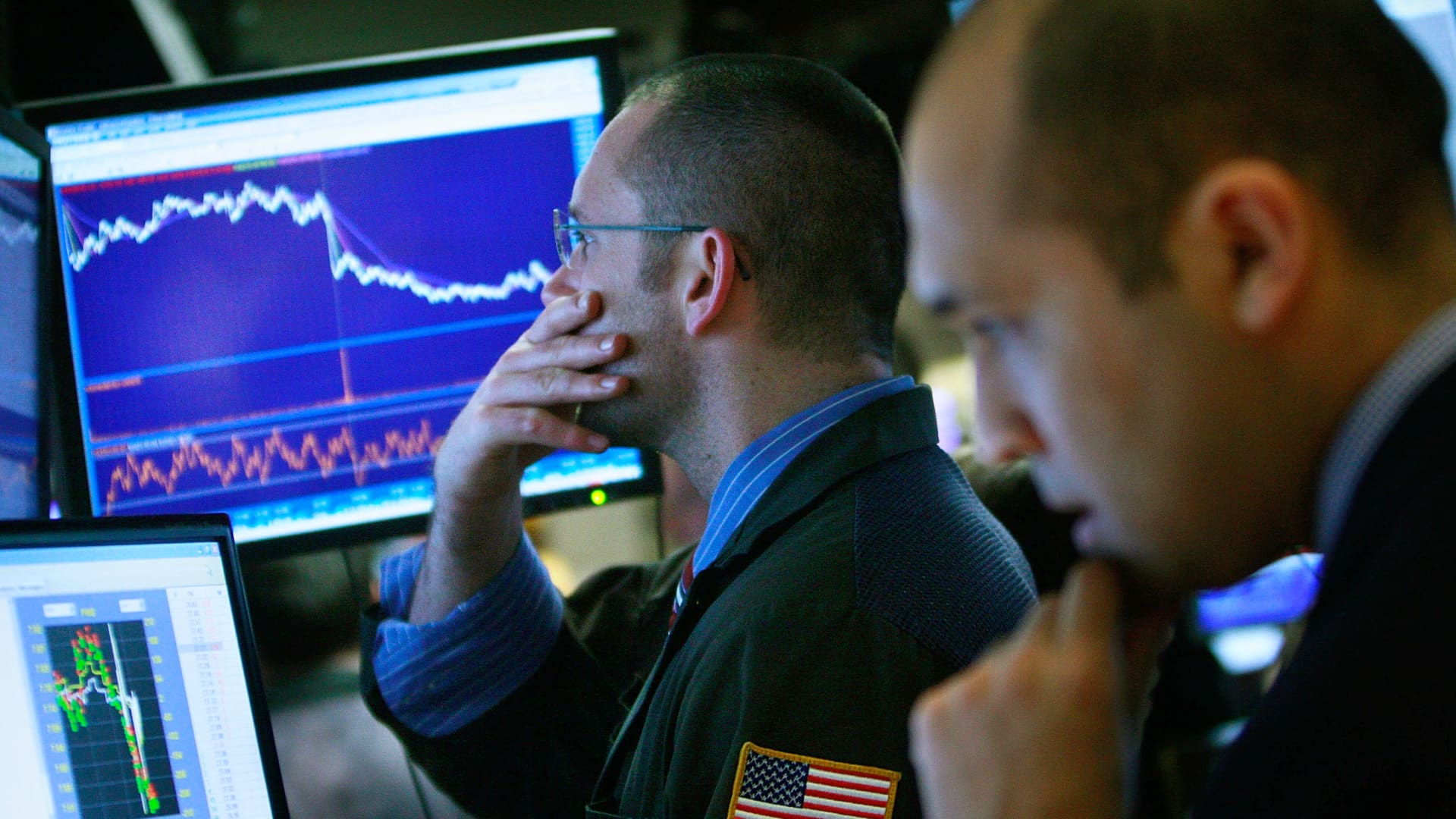Global equities tumbled Tuesday as concerns of inflated valuations and an uncertain macro environment grips investors ahead of Nvidia earnings this week.
The pan-European Stoxx 600 opened in negative territory on Tuesday with mining-linked stocks and banks leading Europe’s losses. The Stoxx Europe 600 Technology Index shed 1.4%, following in the footsteps of U.S. stocks as fears of an artificial intelligence-fueled bubble persist.
The three major U.S. indexes, Dow Jones Industrial Average, the S&P 500 and tech-heavy Nasdaq Composite, ended the previous trading session in the red. Asia-Pacific markets were also lower on Tuesday, led by declines in Japan and South Korean benchmark indexes.
Mike Gallagher, director of research at Continuum Economics, said the market action implies equities could fall about 5% from recent highs — or “a bit more.”
He told CNBC’s “Squawk Box Europe” that the sell-off is “natural profit taking” following a strong market run since April.

An interactive chart showing Europe’s Stoxx 600 index
It all comes on the backdrop of AI bubble fears and the market holding tight for Nvidia’s third-quarter earnings, which are due after Wednesday’s close. Nvidia is seen an important bellwether for the AI industry as many of the largest players rely on its GPUs.
The recent earnings seasons shows that the big hyperscalers are still getting lots of revenue coming through 2026-27, Gallagher said, adding that investors are watching Meta closely because without a server business it serves as an indicator of whether the next wave of AI applications can deliver revenue. “That suggests this is just a routine, healthy correction,” he said.
Tema ETF Chief Investment Officer Yuri Khodjamirian put the sell-off down to a “healthy dose of skepticism” as the market realized that the mega-deals announced over summer need to actually be funded somehow. He pointed to OpenAI’s “massive announcements of commitments to spending on GPUs, power data centers,” and said “the market is starting to realize that this is going to maybe be a slower process than they thought in the summer.”
“There is this kind of balancing going on in the market, and this is what you’re seeing in some of these shares. Oracle‘s share price is back to where it was pre-the OpenAI announcement, so we think it’s reasonably healthy. The dynamics continue, these data center build outs, whether you listen to Microsoft, Meta, Nvidia, etc, they’re all going in the direction of upwards. Nothing’s really stopping, so what we’re seeing is just a healthy correction, in a way, in the marketplace,” Khodjamirian told CNBC’s Silvia Amaro.
However, Gallagher noted that there is an element of de-risking amid an uncertain macro environment. Investors are uncertain about a previously-expected Fed rate cut in December, he said, adding that the central bank will “probably” now pause in the first quarter of 2026.
“Then, all of a sudden, that kind of driver that’s helped risk is no longer there. We’ve also got the Supreme Court in the U.S. due to judge on Trump’s reciprocal tariffs. It’s actually a 50-50 call, whether half of them or all of them are stopped, and that then gets us back into April’s cycle drama about new types of tariffs,” Gallagher said.
“So there’s some things coming over the horizon that make you want to take a bit of risk off the table. So, part of it is just natural pocket taking, part of it is thinking, ‘well, is the macro story going to be perfect? No, it’s not,'” he added.
“To get a major sell off, you may need major bad news, and that we haven’t actually got to that point yet,” Gallagher said.
There is some exaggeration in cryptocurrencies due to leverage, he added. Bitcoin has shed around 25% since its October high, and Ether has dropped 35% since its August high. Industry experts told CNBC that the sector is facing pressures from both an initial macro-driven sell-off and forced liquidations.
Khodjamirian is taking a multi-year view. The CIO said one looming problem is access to electricity. “There’s a realization from executives around, in the United States and in the world, that you need to provide power to these data centers. That is going to be a big, big problem, and that potentially slows down the build out as more power needs to be built,” he said.
“We think it’s the biggest problem and the biggest bottleneck for building out the AI revolution, but also other things like the rebuilding of the industrial base, both in Europe and in the United States, electric vehicles, digital currencies,” he added.





